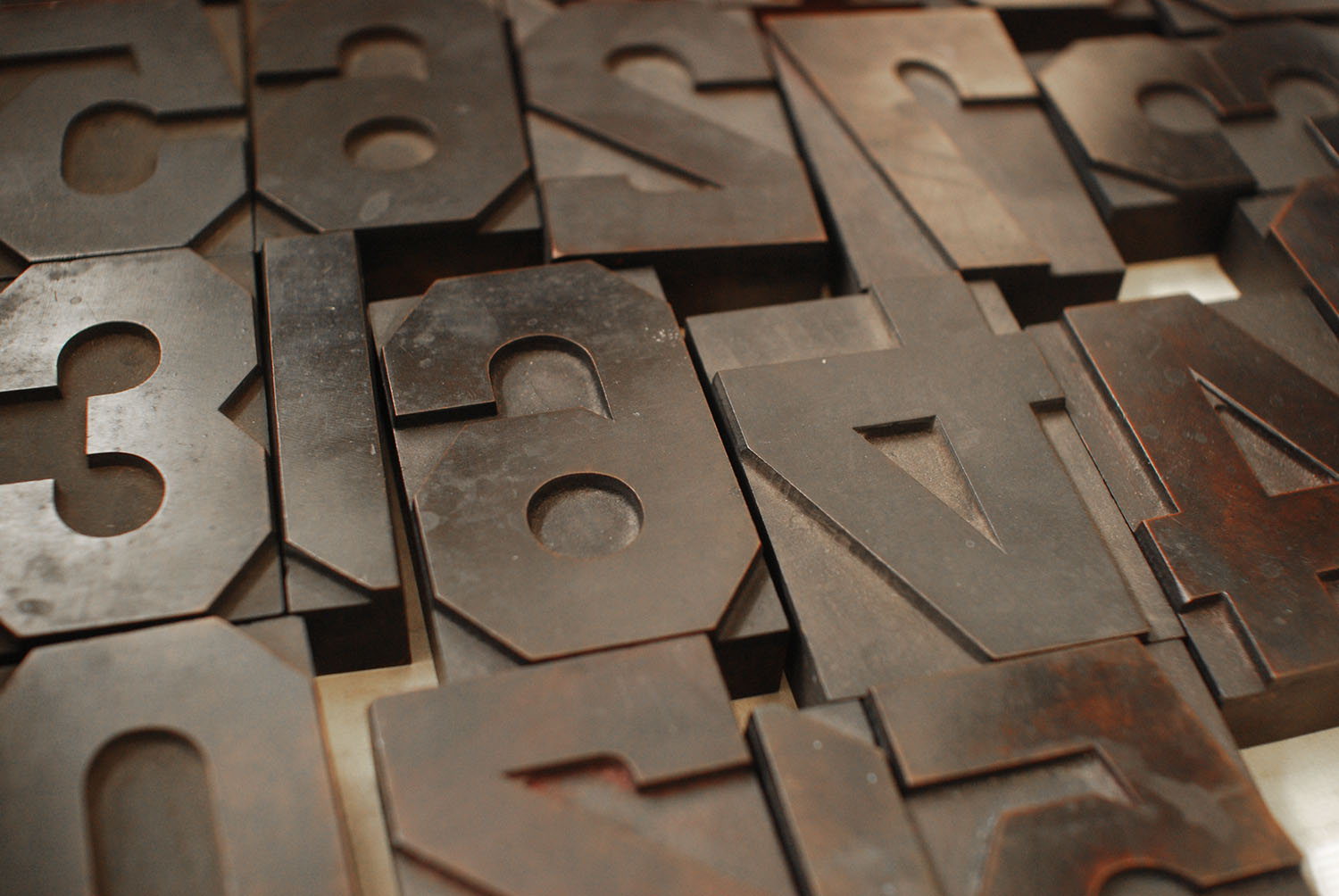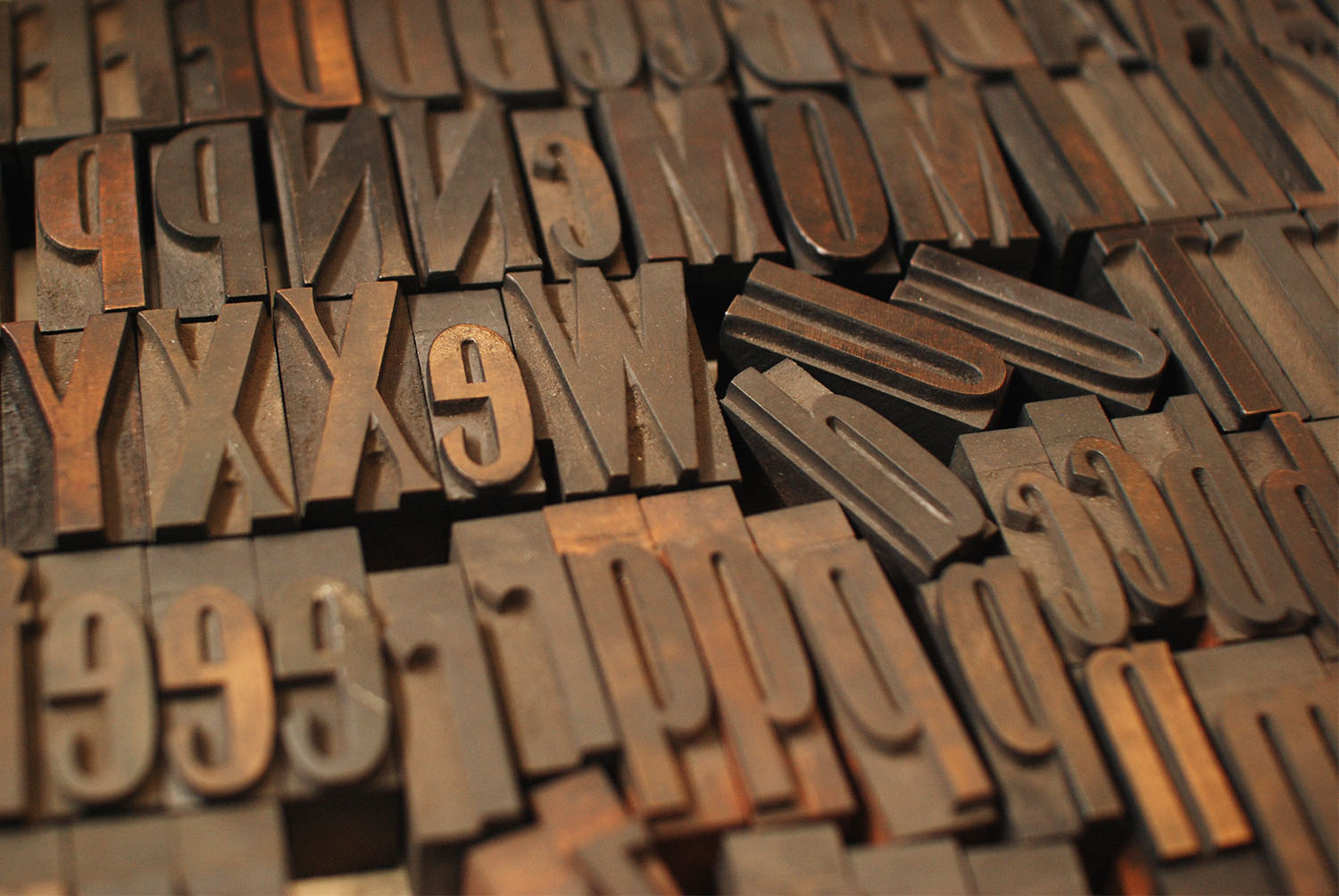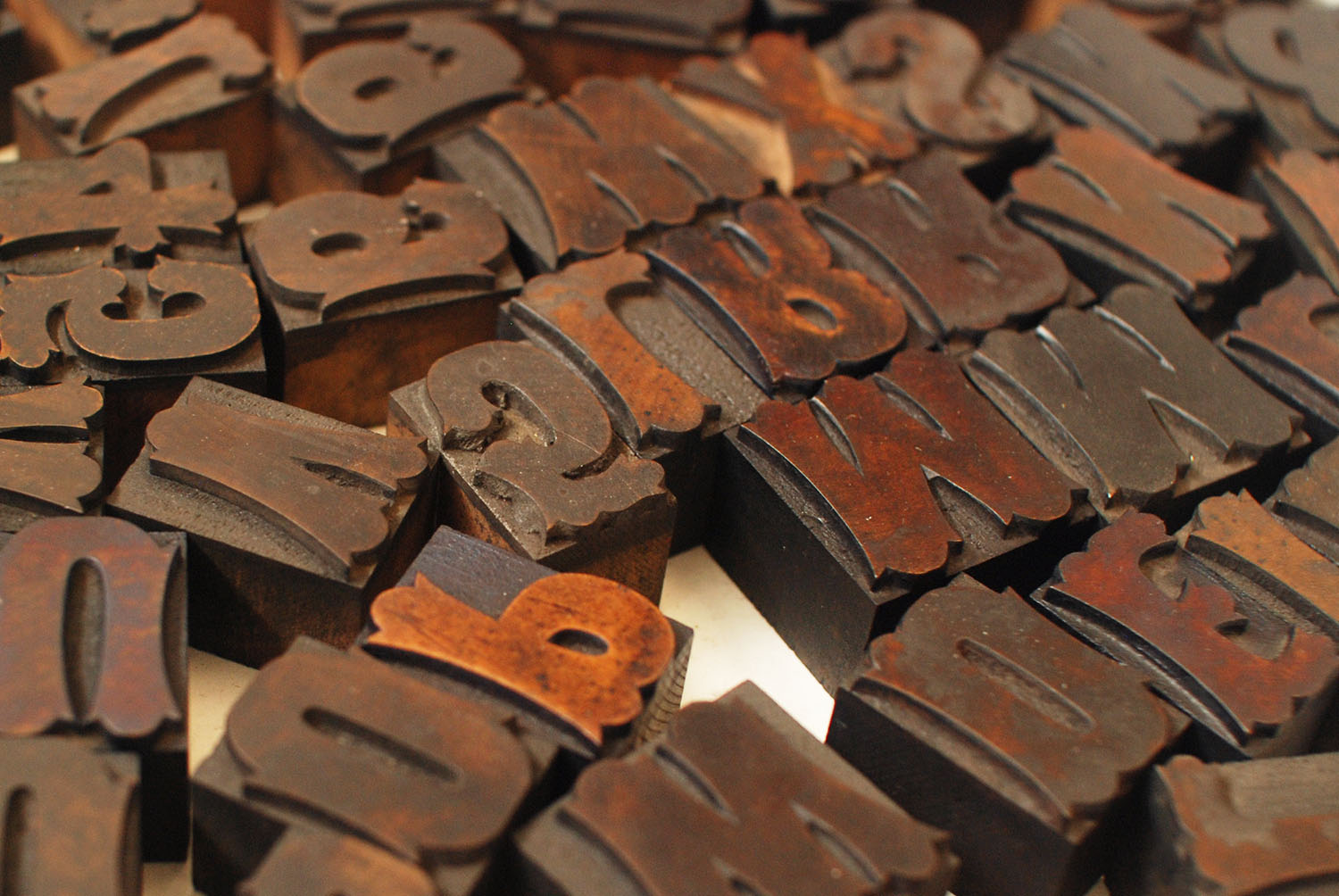Read More
In the late eighteenth and early nineteenth century, a group of English architects and sign writers employed sanserif letters, revived from earlier Roman inscriptional models, for inscriptions and signboards. These sanserifs were typically referred to as “Egyptian letters.” Stylistically, sanserif letters have no serifs, as the name suggests, and tend to have simple, low-contrast strokes. The first typographic sanserif was shown by William Caslon IV in 1816, and named Egyptian. Vincent Figgins used the term Sans-serif when he first showed the style in 1830, and William Thorowgood introduced the term Grotesque when he first showed the style in 1832.
In America, the term used for sanserifs was Gothic. Edwin Allen produced the first Gothic wood type, which was shown in George Nesbitt’s 1838 First Premium Wood Types Cut by Machinery. Nesbitt also showed an extensive range of Allen’s ornamental Gothics, several of which were unique to wood type. All wood type manufacturers produced Gothic typefaces during the nineteenth century. By the twentieth century, Gothics were the dominant, and sometimes the only, style of wood type in production.
Gothic Modulated typefaces are sanserif faces with stroke contrast; they were popular in the 1860s and 1870s.
Read More
As the popularity of Gothics grew in the second half of the nineteenth century, a variation on the mono-line or lineal Gothic was developed: a sanserif style with higher stroke contrast. The style gained popularity after the late 1860s, and more elaborate designs were developed over the rest of the century.
Wells & Webb showed the first modulated Gothic wood type in their 1840 Specimen of Plain and Ornamental Wood Type and named it Gothic Italian. This design was unique to wood type and only produced by Wells & Webb, until Hamilton Mfg. Co. produced a type with similar characteristics in 1889, named Gothic Bold. William Page also produced a number of modulated Gothic designs, the first of which was listed in 1865, and all wood type manufacturers showed a number of variations of the modulated style in specimen books after 1875.
Gothic Tuscans are display faces characterized by low or no stroke contrast, rounded or pointed terminals, bi- or trifurcated serifs, and often a medial (midstem) decoration; they were popular in the second half of the nineteenth century.
Read More
Inspired by the popularity of Antique Tuscans, designers of wood type created a wide variety of Gothic Tuscans during the second half of the nineteenth century. The majority of Gothic Tuscans originated as wood type in America, and were only later produced in metal by typefounders. The first Gothic Tuscan appeared in Wells & Webb’s 1849 Specimen of Plain and Ornamental Wood Type. Another important derivation of the Gothic Tuscan style was a design first shown by Bill, Stark & Co., in 1853, named Tuscan Extra Condensed. Rather than using Bill, Stark & Co.’s name for this style, Rob Roy Kelly avoided confusion by adopting the name used in David Knox’s 1858 Specimens of Wood Type: Concave Tuscan.
A note on the types included in this category: It is difficult with many Tuscans to clearly determine if they were derived from Antique or Gothic styles, since reducing from or adding to the visual form can produce similar results. A number of the types that have been categorized as Gothic Tuscans could just as easily be categorized as Antique Tuscans.



























































